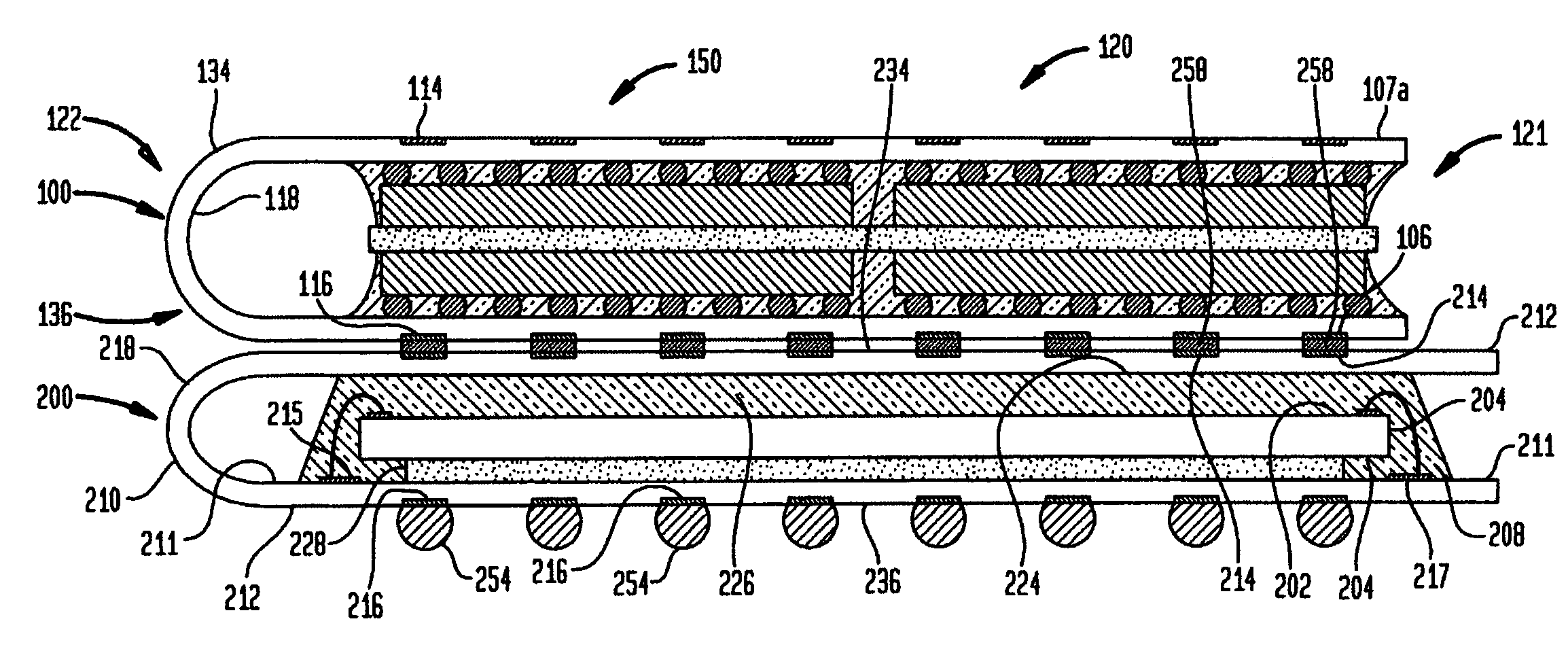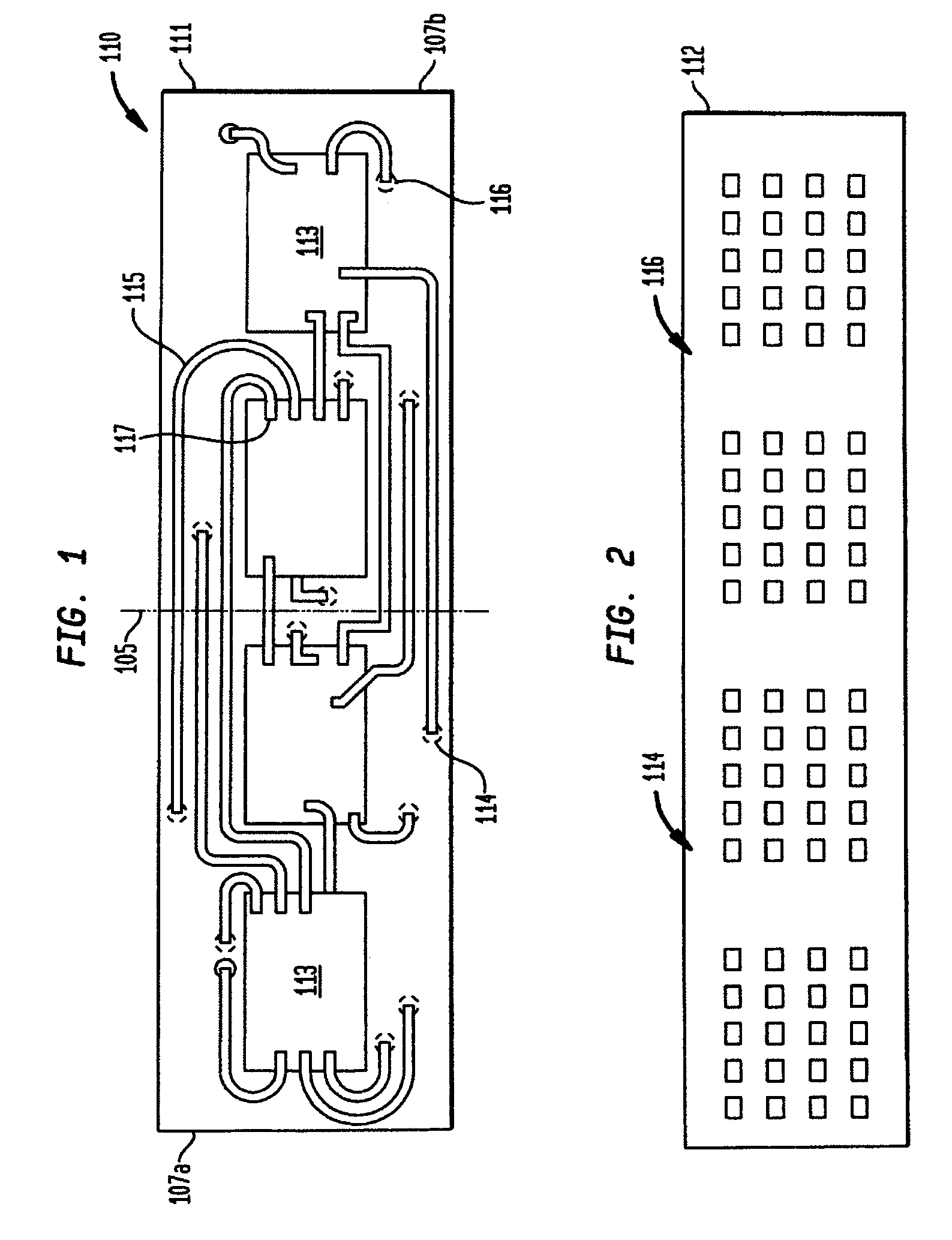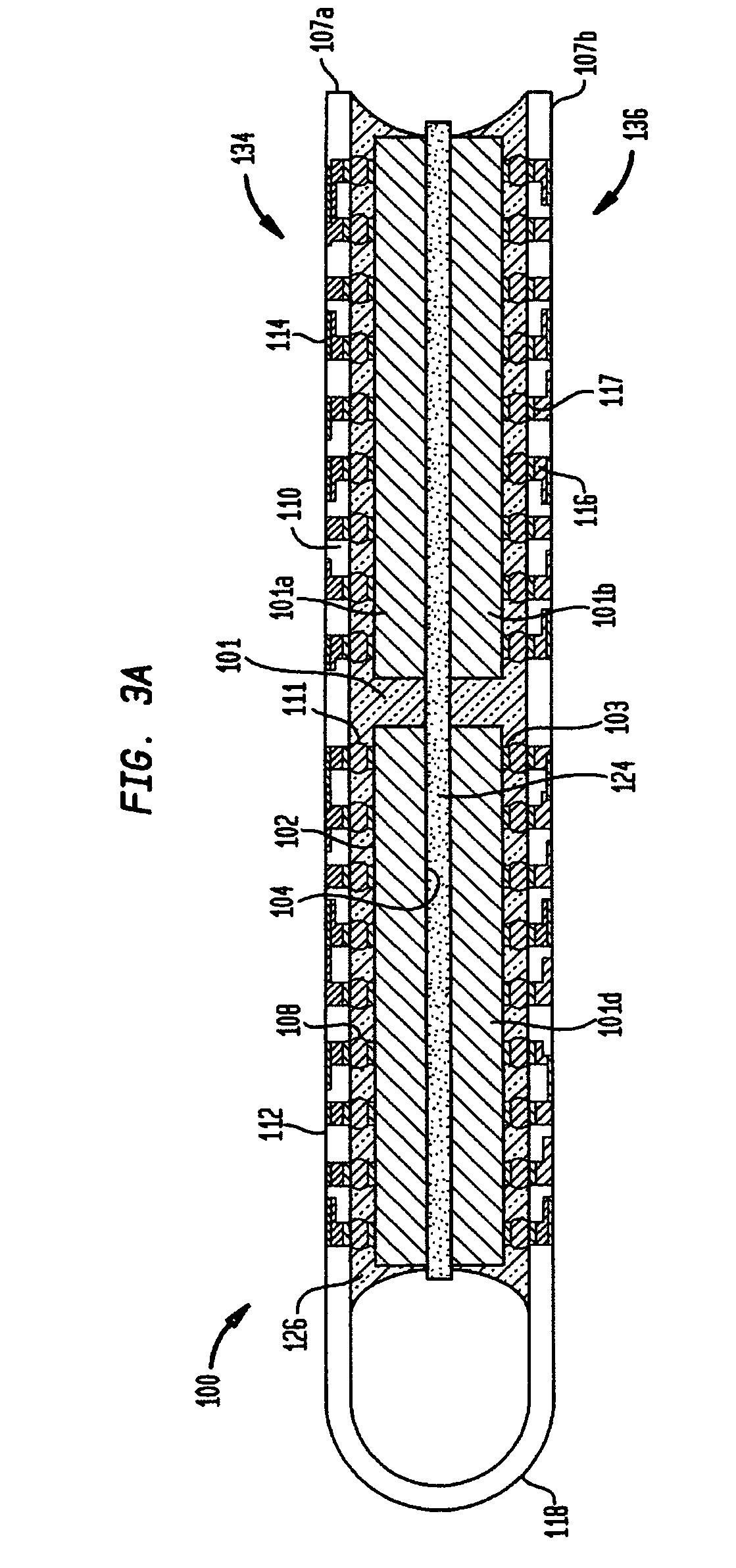Stacked microelectronic assemblies
a technology of microelectronic assemblies and stacking, which is applied in the direction of electrical apparatus contruction details, semiconductor/solid-state device details, printed circuit non-printed electric components association, etc., can solve the problems of increasing the overall size of the package, affecting the processing and feeding of stacking packages, and affecting the placement of packages
- Summary
- Abstract
- Description
- Claims
- Application Information
AI Technical Summary
Problems solved by technology
Method used
Image
Examples
Embodiment Construction
[0040]An embodiment of the invention is shown in FIGS. 1–3A and 4. Substrate 110 comprises an elongated dielectric sheet having a first end 107a and a second end 107b. Substrate 110 is desirably flexible and has a plurality of attachment sites 113 on the first side 111 as best seen in FIG. 1 and first contacts 116 and second contacts 114 disposed at or near a second side 112 as best seen in FIG. 2. Substrate 110 includes a wiring layer with flexible leads 115 extending to the attachment sites 113. Through holes, vias, or other conductive members extend between the contacts to the flexible leads 115 at or near the first side 111 of the substrate 110. The flexible leads 115 have pads 117 exposed at or within the attachment sites 113. Some of the leads 115 extend between pads 117 and the first contacts 116 and some extend between pads 117 and second contacts 114. Some leads 115 extend between two pads 117 at two different attachment sites 113. Some leads extend between first contacts 1...
PUM
 Login to View More
Login to View More Abstract
Description
Claims
Application Information
 Login to View More
Login to View More - R&D
- Intellectual Property
- Life Sciences
- Materials
- Tech Scout
- Unparalleled Data Quality
- Higher Quality Content
- 60% Fewer Hallucinations
Browse by: Latest US Patents, China's latest patents, Technical Efficacy Thesaurus, Application Domain, Technology Topic, Popular Technical Reports.
© 2025 PatSnap. All rights reserved.Legal|Privacy policy|Modern Slavery Act Transparency Statement|Sitemap|About US| Contact US: help@patsnap.com



